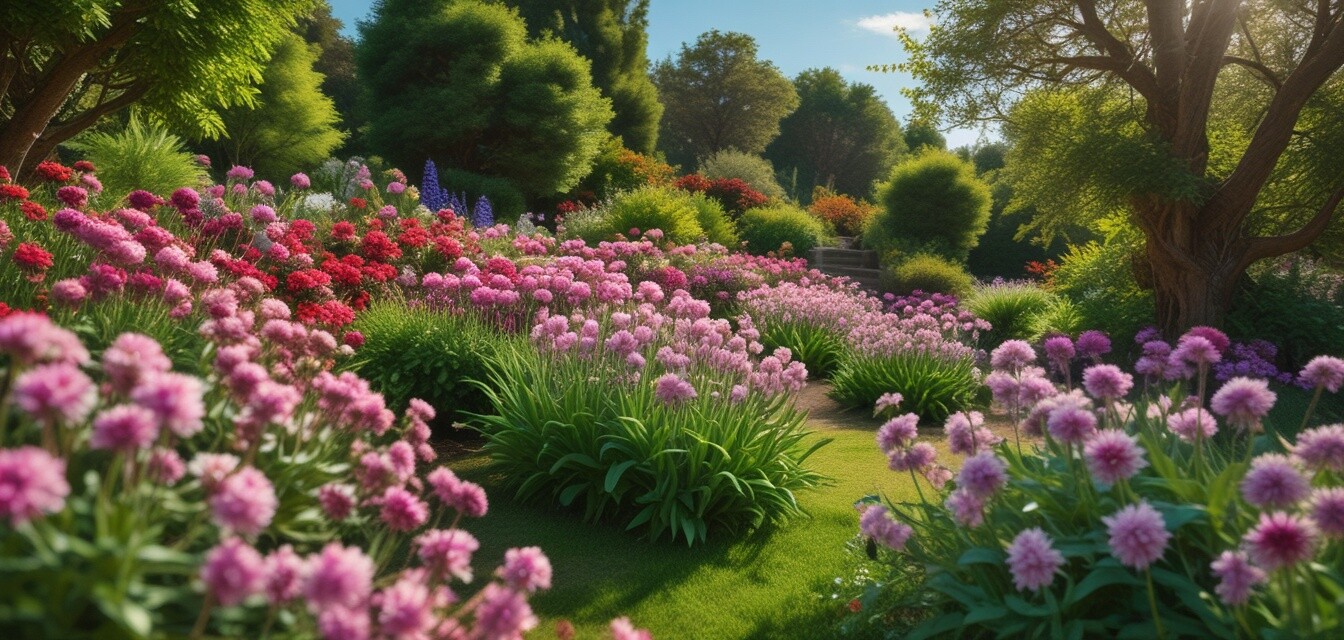
Creating a Garden for Year-Round Interest
- Incorporate a variety of plants that bloom in different seasons.
- Use textures and colors strategically for visual interest.
- Plan your garden layout to ensure year-round appeal.
- Utilize garden structures like trellises and paths to enhance design.
- Consider seasonal changes and maintenance needs for sustainability.
Designing a garden that looks stunning throughout the year can be a rewarding endeavor. With careful planning and a variety of plant selections, you can create a garden that transforms with the seasons while providing consistent beauty and interest. This article delves into various aspects of designing such a garden, including important elements to consider and tips to inspire your creativity.
Understanding seasonal plant selections
When planning your garden for year-round appeal, it's crucial to select plants that bloom and thrive in different seasons. This ensures that your garden never goes out of season. Below is a table highlighting some plants to consider for each season:
| Season | Plants to Consider | Features |
|---|---|---|
| Spring | Tulips, Daffodils, Hyacinths | Bright blooms that signify the start of new life |
| Summer | Lavender, Sunflowers, Roses | Vibrant colors and aromatic scents |
| Fall | Mums, Asters, Ornamental Grasses | Warm hues and unique textures, plus attraction for wildlife |
| Winter | Evergreens, Winterberry, Hellebores | Foliage and berries for visual interest during winter months |
Color and texture for visual appeal
Depending on the mood you want to establish, the color scheme in your garden can play a pivotal role in its overall impact. Here are some tips on how to use color and texture in your garden:
- Contrast: Pair bold colors with softer tones to create intriguing visual dynamics.
- Layering: Use different heights and textures to create depth and interest.
- Seasonal Palette: Rotate plants that highlight seasonal colors, such as pastels for spring and deep reds for fall.
Layout and design elements
The layout of your garden is just as critical as the plants you choose. Here are some design elements to consider for your garden layout:
- Pathways: Create defined pathways to guide visitors through different sections of the garden.
- Seating Areas: Incorporate benches or gazebos to encourage relaxation and enjoyment of the surroundings.
- Vertical Elements: Use trellises or arbors to add height and dimension to your space.
- Water Features: Including ponds or fountains can add movement and sound, enhancing the serene environment.
Maintenance considerations
Creating a beautiful garden that lasts throughout the year requires ongoing maintenance, especially with changing seasons. Here are some tips for ensuring your garden stays in tip-top shape:
Maintenance tips for year-round gardening
- Regularly check for pests and diseases to keep plants healthy.
- Prune back perennials after blooming to encourage new growth.
- Use mulch to retain moisture and suppress weeds during all seasons.
- Seasonally adjust watering schedules based on plant needs and weather patterns.
- Fertilize according to plant types and seasonal requirements.
Creating visual structures
Incorporating various structures like fences, walls, and hedges can enhance the beauty and function of your garden:
- Hedges: Use hedges for privacy while adding greenery.
- Arbors: Create entryways that draw the eye and set a welcoming tone.
- Retaining Walls: Allow for varied planting levels and can add a dramatic effect.
Conclusion
Creating a garden for year-round interest is not just about choosing the right plants; it involves a thoughtful approach to design, color, texture, and maintenance. By carefully planning your layout and incorporating seasonal favorites, your garden can thrive beautifully in every season. Remember, the journey of gardening is as rewarding as the results. For further inspiration, explore our [Garden Inspiration](https://elitelawnandgarden.com/blog/garden-inspiration) category!
Pros
- Visually appealing throughout all seasons
- Year-round wildlife attraction
- Creative flexibility in design
Cons
- Requires more planning and maintenance
- Potentially higher initial costs
- Need for knowledge of plant species and options